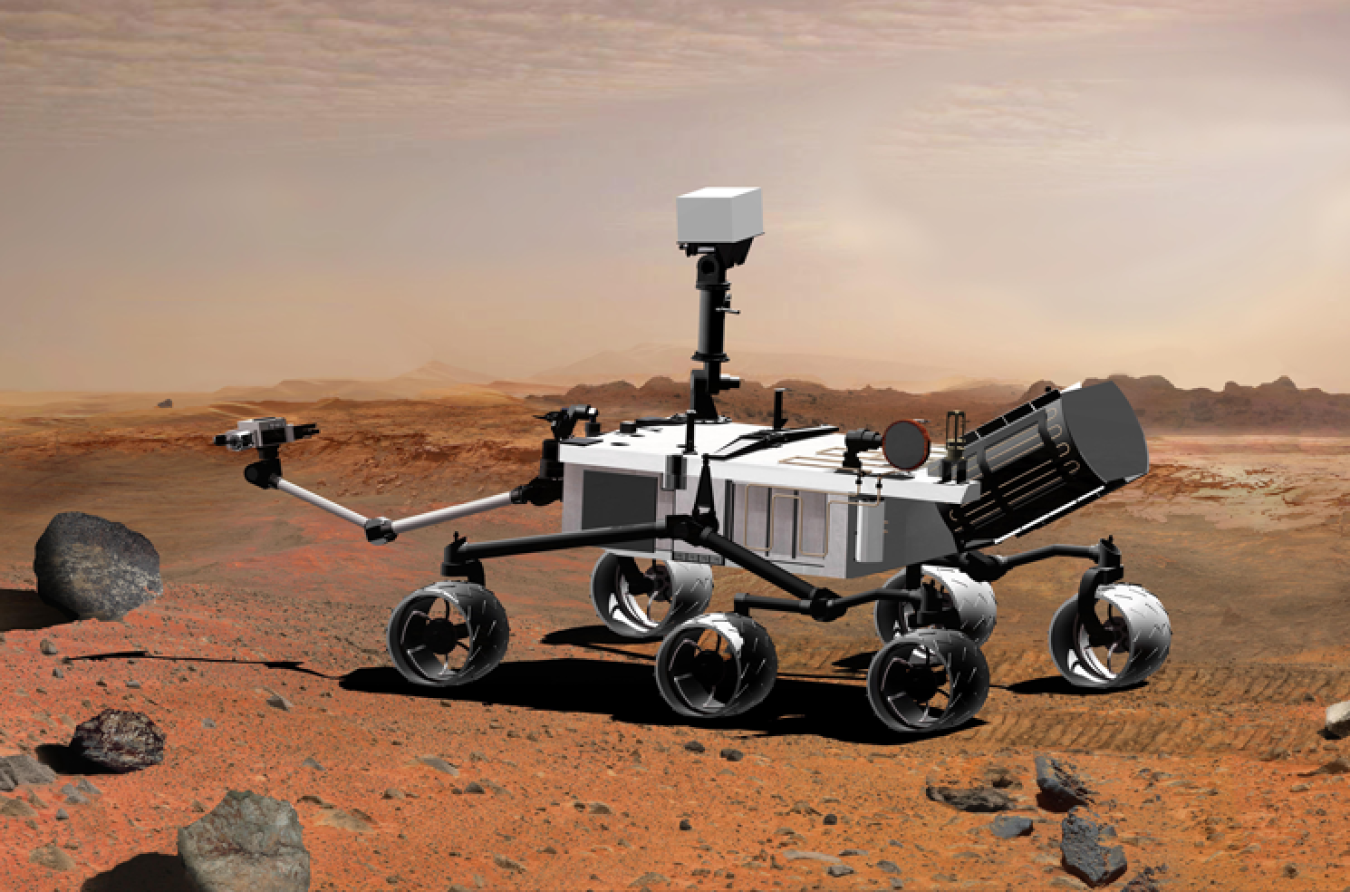A uniquely capable source of power is the radioisotope thermoelectric generator – a nuclear battery that reliably converts heat into electricity.
January 30, 2008
Mars Science Laboratory, aka Curiosity, is part of NASA's Mars Exploration Program, a long-term program of robotic exploration of the Red Planet. It's powered by the Multi-Mission Radioisotope Thermoelectric Generator (MMRTG).
Space exploration missions require safe, reliable, long-lived power systems to provide electricity and heat to spacecraft and their science instruments. A uniquely capable source of power is the radioisotope thermoelectric generator (RTG) – essentially a nuclear battery that reliably converts heat into electricity.
The Department of Energy and NASA are developing a new generation of power system that could be used for a variety of space missions. The new RTG, called a Multi-Mission Radioisotope Thermoelectric Generator (MMRTG), is being designed to operate on planetary bodies with atmospheres such as Mars, as well as in the vacuum of space. In addition, the MMRTG is a more flexible modular design capable of meeting the needs of a wider variety of missions as it generates electrical power in smaller increments, slightly above 100 watts. The design goals for the MMRTG include ensuring a high degree of safety, optimizing power levels over a minimum lifetime of 14 years, and minimizing weight.
What is the History of RTGs in Space?
RTGs are not a new part of the U.S. space program. In fact, they have enabled the National Aeronautics and Space Administration (NASA) to explore the solar system for many years. The Apollo missions (to the moon), the Viking missions (to Mars), and the Pioneer, Voyager, Ulysses, Galileo, Cassini and Pluto New Horizons (outer solar system) missions all used RTGs. The RTGs for the Pioneer 10 spacecraft operated flawlessly for three decades until the spacecraft signal was too weak to detect in 2003. The spectacular Voyager 1 and 2 missions, operating on RTG power since launch in 1977, now are on the verge of reaching interstellar space.
While RTGs have never been the cause of a spacecraft accident, they have been on board three space missions that did fail for other reasons. In all three cases, the RTGs performed as designed.
Early RTGs carried smaller amounts of radioisotope material and in keeping with the safety philosophy at the time, were built to burn up at high altitude during an accidental reentry. One such reentry occurred in 1964 during the malfunction of a navigational satellite for the Navy. Later RTGs were designed to contain their plutonium in case of reentry. RTGs performed this function successfully in the case of a failed weather satellite in a 1968 launch and during the South Pacific jettisoning of the Apollo 13 lunar lander, which contained an RTG to power a science package. In both instances, upon re-entry and ocean impact, there was no release of plutonium to the environment.
How Do RTGs Work?
RTGs work by converting heat from the natural decay of radioisotope materials into electricity. RTGs consist of two major elements: a heat source that contains plutonium-238 dioxide and a set of solid-state thermocouples that convert the plutonium’s heat energy to electricity.
Conversion of heat directly into electricity is not a new principle. It was discovered 150 years ago by a German scientist named Thomas Johann Seebeck. He observed that an electric voltage is produced when two dissimilar, electrically conductive materials are joined in a closed circuit and the two junctions are kept at different temperatures. Such pairs of junctions are called thermoelectric couples (or thermocouples). The power output is a function of the temperature of each junction and the properties of the thermoelectric materials. The thermocouples in RTGs use heat from the natural radioactive decay of plutonium-238 to heat the hot junction of the thermocouple, and use the cold of outer space to produce a low temperature at the cold junction of the thermocouple.
The MMRTG is designed to use a heat source composed of eight General Purpose Heat Source (GPHS) modules. The MMRTG contains a total of 4.8 kg (10.6 lb.) plutonium dioxide that initially provides approximately 2,000 watts of thermal power and 120 watts of electrical power. The thermoelectric GPHS Module materials have demonstrated extended lifetime and performance capabilities, and are the same as those used for the two Viking spacecraft that landed on Mars in 1976. The MMRTG generator is about 64 cm (25 inches) in diameter (fin tip to fin tip) by 66 cm (26 inches) long and weighs about 45 kg (94 lb.).
Mars Science Laboratory
NASA is planning a mission that would launch, in 2009, a large, highly capable rover, the Mars Science Laboratory, and land it on the surface of Mars in 2010. The proposed rover would use power from an MMRTG to supply heat and electricity for its components and science instruments. Reliable power from the MMRTG would allow it to operate for at least one Mars year (687 Earth days) over a wide range of candidate landing sites.
Key Fact
Over the last four decades, the United States has launched 26 missions involving 45 RTGs.

